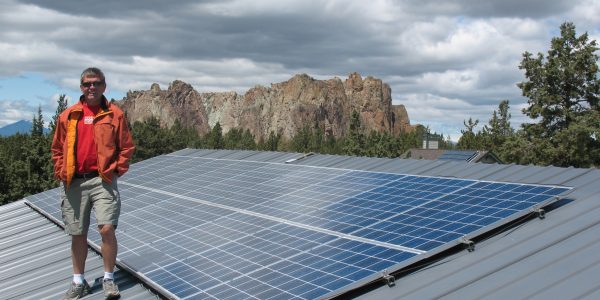Governor Kitzhaber’s 10-Year Energy Action Plan Moves Forward

As part of his efforts to shape Oregon’s energy future, Governor Kitzhaber recently held a ceremonial bill signing of legislation that advances key energy and jobs policies outlined in Oregon’s 10-Year Energy Action Plan.
“These bills are a great step forward in meeting the goals of our 10-Year Energy Plan and positioning Oregon to be more competitive in the global economy,” said Governor Kitzhaber. “Energy is the issue of our time, and no single issue will have a greater impact on our state’s economy, environment and quality of life in the coming decade.”
The ceremonial bill signing featured Senate Bill 692, which aligns Oregon’s energy efficiency standards for appliances with California and British Columbia; House Bill 2801, which expands market opportunities for energy efficiency and conservation by allowing utilities to invest public purpose charge funds in whole-building energy efficiency retrofits; and Senate Bill 242, which reduces the amount of coal in the state’s future energy resource mix to encourage investment in lower-carbon alternatives.
“I also want to applaud President Obama for his effort to address climate change at the national level,” said Governor Kitzhaber. “His actions to reduce carbon emissions from coal-fired power plants, improve appliance standards, and promote renewable energy on public lands will reduce our nation’s carbon footprint while making the U.S. more competitive economically.”
Other components to the 10-Year Energy Action Plan that have passed this legislative session include:
HB 2820: Requires solar energy projects over a certain acreage threshold to be permitted by the Energy Facility Siting Council.
HB 2893: Extends the solar feed-in tariff pilot program for two years to increase investment in distributed generation (solar panels on residential homes) and requires the Oregon Public Utility Commission to study solar resource value and to determine what distributed generations programs are best for Oregon.
HB 2105: Directs the Energy Facility Siting Council to determine how to streamline the regulatory process to protect natural resources and to remove market barriers for energy development in Oregon.
SB 606: Promotes responsible wave and wind energy development in Oregon’s Territorial Sea.
The Legislature is still considering:
SB: 488: Lifts the sunset on Oregon’s Clean Fuels Program to reduce the carbon content of fuels in Oregon, aligning them with California and Washington to create a west-coast-wide market for alternative fuels.
HB 2345: Establishes Oregon Innovation in Infrastructure Task Force to address how to maximize public investment in 21st century infrastructure.
SB 844: Creates a voluntary carbon reduction program to increase energy efficiency and conservation, renewable energy projects and create low-carbon alternatives in the transportation sector.
HB 2807: Creates more transparency at the Oregon Department of Energy.
For more information: Oregon’s 10-Year Energy Plan